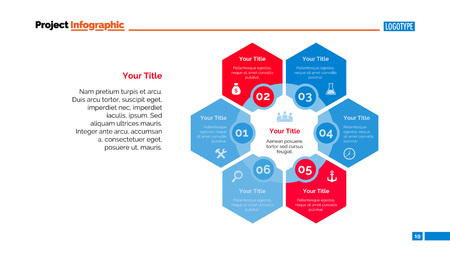Introduction to SEO for Indian Websites
Search Engine Optimization (SEO) is the backbone of digital visibility in todays competitive online landscape. For Indian businesses and content creators, understanding the fundamentals of SEO is crucial for achieving higher rankings on search engines like Google and Bing, which are widely used across India. SEO involves a strategic blend of on-page, off-page, and technical techniques that ensure your website appears prominently when users search for relevant products, services, or information.
The Indian digital ecosystem presents unique opportunities and challenges. With over 800 million internet users and a rapidly growing mobile-first audience, local trends play a significant role in shaping user behaviour. Indians often rely on voice search, use regional languages such as Hindi, Tamil, Telugu, or Bengali, and prefer localized content that resonates with their culture and daily life. Furthermore, Indian netizens frequently access websites through budget smartphones and varying internet speeds, making site performance and mobile optimization critical factors for SEO success.
For businesses ranging from small startups to established enterprises, as well as bloggers and influencers, investing in SEO can drive organic traffic, build brand trust, and generate leads without relying heavily on paid advertising. By aligning your website’s SEO strategy with Indian search habits—such as targeting high-volume keywords in Hinglish or focusing on local intent—you can effectively reach your target audience and grow your online presence in this diverse market.
2. On-Page SEO Essentials with a Desi Touch
Understanding On-Page SEO for Indian Websites
When optimising your website for the Indian audience, on-page SEO goes beyond standard best practices. India’s linguistic and cultural diversity makes it essential to tailor content for local preferences, languages, and search behaviours. Let’s break down the most important on-page SEO elements with an Indian flavour.
Key Elements of On-Page SEO for Indian Sites
1. Keyword Localisation
Indian users often search using a mix of English, Hindi (Hinglish), or regional languages. To capture this unique search pattern, use keyword localisation strategies:
| Standard Practice | Desi Optimisation |
|---|---|
| English Keywords | Include Hinglish & regional keywords (e.g., “best saree shop in Delhi”, “सस्ता मोबाइल फोन”) |
| Generic Phrases | Add city/town names and local slang (e.g., “PG near me”, “Dabba service Mumbai”) |
2. Multilingual Support
India’s web audience consumes content in multiple languages. Supporting major Indian languages—Hindi, Tamil, Telugu, Bengali, Marathi, etc.—can boost reach and engagement. Use hreflang tags to indicate language targeting and structure URLs accordingly (e.g., /hi/ for Hindi, /ta/ for Tamil).
| Element | Best Practice for India |
|---|---|
| Language Tags | Add <link rel="alternate" hreflang="hi-IN" href="..." /> |
| Content Translation | Localise not just words, but also cultural references and idioms. |
3. Culturally Relevant Meta Tags
Your meta titles and descriptions must reflect local context to improve CTR from SERPs. Incorporate local festivals, events, or trending topics where relevant. For example: “Top Kurti Styles for Diwali 2024 – Affordable Ethnic Wear Online”. Ensure meta tags are written in the appropriate language for each page version.
Quick Tips for Desi On-Page SEO Success:
- Create location-specific landing pages (e.g., “Best Lassi Shops in Amritsar”).
- Add schema markup with local business info (address in native script).
- Optimise images with ALT text in local languages.
By giving your on-page SEO a true desi twist—through keyword localisation, multilingual support, and culturally tuned meta tags—you lay the groundwork for better rankings and deeper connection with Indian users.

3. Optimising Content for Indian Audiences
Strategies for Writing Engaging, Locally Resonant Content
When optimising content for Indian websites, it is crucial to understand the diversity and uniqueness of the Indian digital audience. Start by researching regional preferences, popular search terms in Hinglish or local languages, and trending topics relevant to various states or metro cities. Use simple English with familiar Indian expressions to connect naturally with readers. Keep sentences concise and scannable for mobile-first audiences who often access content on-the-go.
Incorporating Indian Idioms and Cultural References
Integrate commonly used Indian idioms and phrases that resonate with your target demographic. For example, using terms like “jugaad” (innovative fix), “chai pe charcha” (discussion over tea), or “desi solutions” can make your content more relatable and engaging. Highlight stories or case studies featuring local brands, influencers, or real-life events from India to boost authenticity.
Leveraging Festivals and Regional Events
India celebrates a variety of festivals—Diwali, Holi, Eid, Pongal, Onam, and more—which provide excellent opportunities for timely and relevant content updates. Create special blog posts, landing pages, or offers around these events. For example, “Best SEO Tips for Diwali Sale Promotions” or “How to Optimise Your Website During IPL Season” can attract festival-driven traffic and enhance user engagement.
Geo-Specific Call-to-Actions (CTAs)
Tailor your CTAs based on city, region, or state. Instead of generic prompts like “Contact Us”, use location-aware CTAs such as “Find an Expert in Mumbai”, “Get Free Consultation in Bangalore”, or “Book Your Slot for Chennai Workshop”. This approach increases relevance and conversion rates by acknowledging the user’s location and catering to their specific needs.
Conclusion: Boosting Relevance and Relatability
For effective SEO in the Indian context, blend technical optimisation with deep cultural understanding. Write content that speaks the language of your audience—not just literally but also emotionally. By incorporating Indian idioms, referencing local festivals, and using geo-targeted CTAs, you can significantly improve both search visibility and user engagement on your website.
4. Off-Page SEO: Building Authority in the Indian Context
Off-page SEO is essential for boosting your website’s authority and search rankings, especially in a diverse and competitive market like India. While global link-building tactics provide a strong foundation, tailoring your approach to the Indian digital ecosystem can give you a significant edge. Below are key strategies to enhance off-page SEO specifically for Indian websites.
Effective Link-Building Approaches for Indian Domains
Building high-quality backlinks from relevant Indian domains (.in, .co.in, .bharat) signals local relevance to search engines. Prioritise getting listed on authoritative Indian websites, such as educational institutions, government portals, or local business networks. Guest posting on popular Indian blogs or news sites also enhances credibility and drives targeted traffic.
Leveraging Local Directories
Local directories remain highly influential in India’s digital landscape. Getting featured in trusted directories not only helps with backlinks but also improves visibility among local audiences. Consider these top platforms:
| Directory Name | Domain Type | Category Focus |
|---|---|---|
| Justdial | .com/.in | All Businesses |
| Sulekha | .com/.in | Services & Local Listings |
| IndiaMART | .com/.in | B2B Marketplace |
| TradeIndia | .com/.in | B2B Marketplace |
| Yellow Pages India | .in/.co.in | General Directory |
Influencer Collaborations: The Indian Way
The influencer ecosystem in India is rapidly growing across platforms like Instagram, YouTube, and ShareChat. Partnering with regional influencers who speak major languages (Hindi, Tamil, Telugu, Bengali, etc.) helps your brand resonate locally. Look for micro-influencers with loyal niche followings—they offer better engagement rates and cost-effectiveness for link placements or mentions.
Community Platforms Unique to India
Tapping into community-driven platforms like Quora India, Lokal App, and regional forums (e.g., Pagalguy for education, Team-BHP for automotive) can generate organic backlinks and drive discussions around your brand. Participating in WhatsApp groups or Telegram channels related to your industry is also effective for grassroots-level promotion.
Summary Table: Off-Page SEO Opportunities in India
| Strategy | Description/Example Platforms |
|---|---|
| Local Directories | Justdial, Sulekha, IndiaMART, TradeIndia, Yellow Pages India |
| Influencer Outreach | YouTube creators (regional), Instagram micro-influencers, ShareChat personalities |
| Community Engagements | Lokal App, Quora India, Pagalguy Forums, WhatsApp/Telegram Groups |
| Guest Blogging & PR | YourStory, Times of India Blogs, regional news portals (e.g., Dainik Jagran) |
| B2B Networks & Events | CII, FICCI events listings, startup meetups online/offline |
By combining these India-specific off-page SEO strategies with consistent engagement and quality content sharing, you can build sustainable domain authority and outperform competitors in the local search space.
5. Technical SEO: Speed, Mobile, and Bharat Specifics
Mobile Optimization for the Indian Market
India is one of the world’s largest smartphone markets, with millions accessing the internet primarily through mobile devices. Ensuring your website is fully responsive and delivers a seamless experience on all screen sizes is non-negotiable. Use AMP (Accelerated Mobile Pages) for lightning-fast loading on mobile and implement touch-friendly navigation. Testing your site using Google’s Mobile-Friendly Test tool ensures you meet the essential criteria for Indian users.
Site Speed: Catering to Slower Networks
Network speeds can vary greatly across India, especially in tier-2 and tier-3 cities and rural regions. Optimize images by using next-gen formats like WebP, leverage browser caching, enable compression (such as GZIP), and minimize CSS/JS files. A fast-loading site not only improves user experience but also boosts search rankings, since Google considers speed a ranking factor—critical when targeting users on 3G or even slower connections common in Bharat.
Bharat-Specific Technical Adjustments
Local Search Engine Preferences
While Google dominates, regional search engines like Bing India or localised platforms may have unique requirements. Submitting sitemaps to these engines and following their webmaster guidelines increases visibility.
Structured Data for Local Context
Implement schema markup relevant to Indian content—such as business hours in IST, payment options suited to Indian consumers (UPI, Paytm), and address formats accommodating PIN codes. This helps search engines serve rich results tailored to local queries.
Language & Multilingual Support
Many Indian users search in vernacular languages. Use hreflang tags to serve regional language versions of your site (Hindi, Tamil, Telugu, etc.), ensuring proper indexing and better user experience for non-English speakers.
Conclusion
A successful technical SEO strategy for Indian websites means prioritising mobile responsiveness, optimising for varying network speeds, and adapting to the linguistic and technological diversity of Bharat. By addressing these specifics, your website becomes more accessible and discoverable across India’s digital landscape.
6. Monitoring, Tools, and Google-Ready Best Practices
Recommended Monitoring Tools for Indian Webmasters
Effective SEO is incomplete without regular monitoring and data-driven decision making. For Indian webmasters, choosing the right set of tools tailored to local needs is crucial. Google Search Console remains a must-have for all Indian sites, providing detailed insights into site performance, mobile usability, and search queries specific to India. SEMrush and Ahrefs offer region-specific keyword tracking and backlink analysis essential for understanding competition within the Indian digital landscape. Additionally, Zoho PageSense, developed in India, enables A/B testing and visitor behavior analysis suited for Indian audiences.
Google My Business: Optimizing for Local Indian Searches
For businesses targeting local Indian customers, optimizing your Google My Business (GMB) profile is critical. Ensure your business information is accurate in English and regional languages like Hindi, Tamil, or Bengali as needed. Regularly update images, post local offers during festivals like Diwali or Holi, and encourage reviews from local patrons in their preferred language. This not only boosts visibility in Google Maps but also builds trust with the diverse Indian customer base.
Actionable Analytics Advice for Continuous Improvement
Analytics is at the heart of ongoing SEO success. Use Google Analytics 4 to track key metrics such as bounce rate, average session duration, and top-performing pages among Indian users. Segment your audience by city or state to identify high-potential regions—this is especially important in India’s varied demographic landscape. Set up conversion goals aligned with business objectives; for example, tracking calls from mobile devices—a common user behavior in India—can help refine your mobile SEO strategy.
Best Practices for Staying Google-Ready in India
- Keep your website fast and mobile-friendly, as most Indian users access the web via smartphones.
- Regularly audit your website for broken links and outdated content using tools like Screaming Frog or Sitebulb.
- Stay updated with Google’s guidelines and algorithm changes relevant to the Indian market—follow official blogs or join local SEO communities on platforms like WhatsApp or Telegram.
Conclusion
The path to strong SEO results in India lies in combining global best practices with tools and strategies tailored for the Indian web ecosystem. Regular monitoring, leveraging the right tools, optimizing Google My Business listings for local flavor, and data-driven improvements will ensure your website not only attracts traffic but also delivers lasting value across India’s dynamic online landscape.


